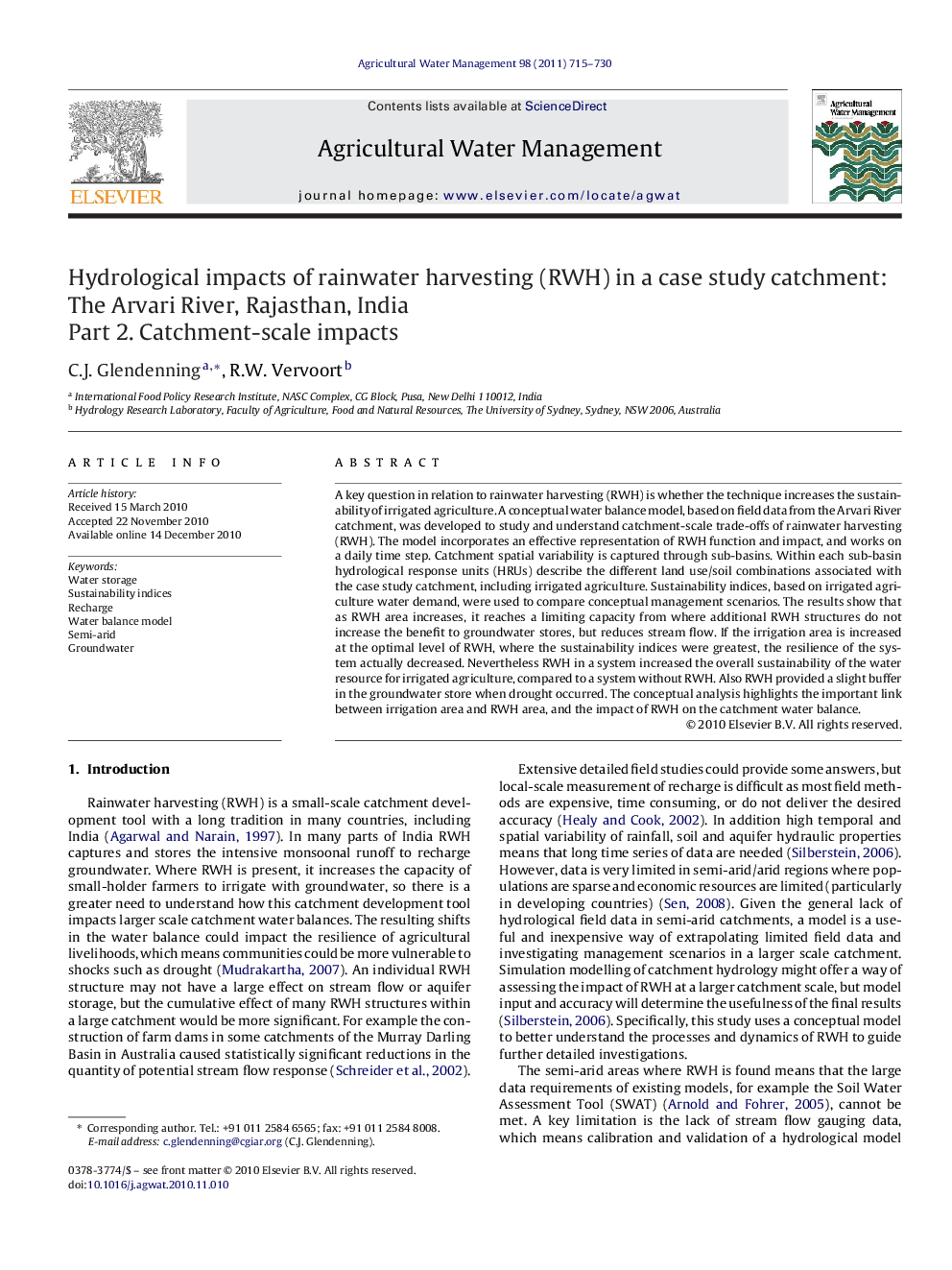| Article ID | Journal | Published Year | Pages | File Type |
|---|---|---|---|---|
| 4479557 | Agricultural Water Management | 2011 | 16 Pages |
A key question in relation to rainwater harvesting (RWH) is whether the technique increases the sustainability of irrigated agriculture. A conceptual water balance model, based on field data from the Arvari River catchment, was developed to study and understand catchment-scale trade-offs of rainwater harvesting (RWH). The model incorporates an effective representation of RWH function and impact, and works on a daily time step. Catchment spatial variability is captured through sub-basins. Within each sub-basin hydrological response units (HRUs) describe the different land use/soil combinations associated with the case study catchment, including irrigated agriculture. Sustainability indices, based on irrigated agriculture water demand, were used to compare conceptual management scenarios. The results show that as RWH area increases, it reaches a limiting capacity from where additional RWH structures do not increase the benefit to groundwater stores, but reduces stream flow. If the irrigation area is increased at the optimal level of RWH, where the sustainability indices were greatest, the resilience of the system actually decreased. Nevertheless RWH in a system increased the overall sustainability of the water resource for irrigated agriculture, compared to a system without RWH. Also RWH provided a slight buffer in the groundwater store when drought occurred. The conceptual analysis highlights the important link between irrigation area and RWH area, and the impact of RWH on the catchment water balance.
Research highlights▶ Conceptual water balance model developed that models rainwater harvesting (RWH) function in a large catchment. ▶ Modelled scenarios, compared using sustainability indices, show RWH improves sustainability of irrigated agriculture. ▶ At higher degrees of RWH development there is a limiting point, where sustainability indices do not increase or in some cases decrease.
